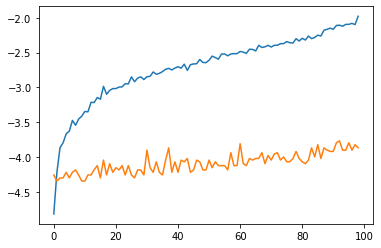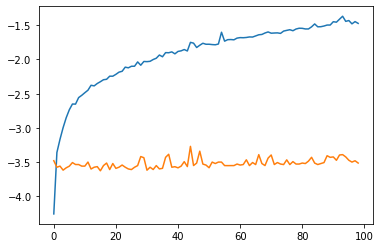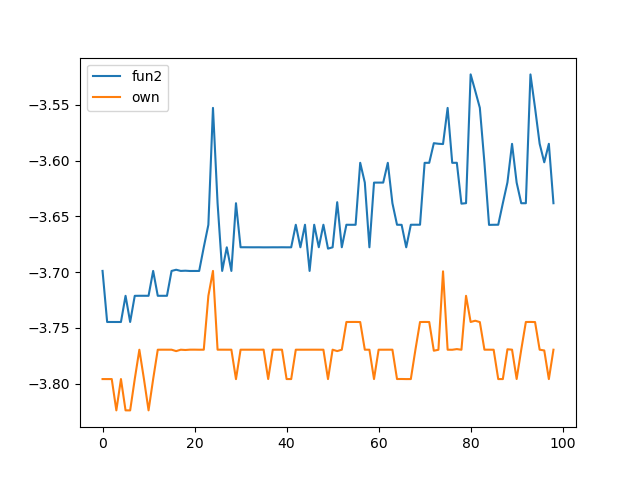The Python loop wouldn’t scale that well for larger values of N.
You could use an approach of repeating the initial tensor and calling view on it to create an “interleaved” tensor. This approach would be a bit wasteful in memory, but would yield a better compute performance.
Here is the comparison with a quick profiling for CPU and GPU:
def fun1(N, c, device):
discount_matrix = torch.triu(torch.ones(size=(N, N), device=device))
for i in range(1, N):
tril_idx = torch.triu_indices(
row=N,
col=N,
offset=i)
discount_matrix[tril_idx[0], tril_idx[1]] *= c
return discount_matrix
def fun2(N, c, device):
tmp = torch.tensor([float(c)**i for i in range(N)], device=device)
tmp = torch.cat((tmp, torch.zeros(1, device=device)))
res = torch.triu(tmp.repeat(N).view(-1, N)[:-1])
return res
c = 2
nb_iters = 100
f1_times = []
f2_times = []
device = 'cuda'
for N in range(1, 100):
# correctness check
print((fun1(N, c, device) == fun2(N, c, device)).all())
# timing
torch.cuda.synchronize()
t0 = time.time()
for _ in range(nb_iters):
out = fun1(N, c, device)
torch.cuda.synchronize()
t1 = time.time()
f1_time = (t1 - t0)/nb_iters
print('fun1({}, {}): {}ms'.format(N, c, f1_time))
f1_times.append(f1_time)
torch.cuda.synchronize()
t0 = time.time()
for _ in range(nb_iters):
out = fun2(N, c, device)
torch.cuda.synchronize()
t1 = time.time()
f2_time = (t1 - t0)/nb_iters
print('fun2({}, {}): {}ms'.format(N, c, f2_time))
f2_times.append(f2_time)
plt.figure()
plt.plot(np.log10(np.array(f1_times)))
plt.plot(np.log10(np.array(f2_times)))
Results for N in range(1, 100). Blue curve: your approach, orange curve: my proposal, y-axis: log10 of the time in ms, x-axis: N (sorry for being too lazy to properly add the legends into the plot  ).
).
CPU:

GPU:



